Capraia est une petite île volcanique de l’archipel toscan, située en mer Tyrrhénienne à environ 62 km au nord-ouest de Livourne. C’est la troisième plus grande île de l’archipel après l’Elbe et Pianosa, avec une superficie d’environ 19 km². D’origine volcanique, l’île offre un relief accidenté, dominé par des falaises abruptes, des criques et des sentiers escarpés, ainsi qu’une végétation méditerranéenne préservée.
La seule commune, également appelée Capraia, conserve un charme authentique avec ses maisons colorées et ses ruelles étroites. L’île a longtemps été isolée, ce qui a permis de préserver son environnement naturel et marin. Capraia est aujourd’hui protégée dans le cadre du Parc National de l’Archipel Toscan, idéal pour la randonnée, la plongée et l’observation de la faune et de la flore locales. Son port pittoresque et ses petites plages font de l’île une destination tranquille, loin du tourisme de masse, mais riche en histoire et en paysages.
Highlights ” to see / to do
- The village of Capraia, historic center with its narrow streets and colorful houses
- The Genoese fortifications, including the Fortezza Vecchia
- The Monte Castello trail and other panoramic hiking routes
- The beaches and coves, notably Cala Rossa and Cala del Ceppo
- Diving and snorkeling in the crystal-clear waters
- The local flora and fauna, with endemic and protected species
- The historical and archaeological remains, witnesses of Genoese occupation and former penitentiary activities
- Observing seabirds and the endemic Capraia lizard
Village of Capraia
The main village shares its name with the island, Capraia Island. It is located slightly inland from the port, offering a panoramic view of it. It retains an authentic charm with its narrow streets and colorful houses, preserving its character with few modern constructions, contributing to its atmosphere. The central square, Piazza Milano, is the heart of the village. It houses the church of the same name, dedicated to Saint Nicholas, whose wooden statue was recovered from the sea and is still displayed inside the church.
The village is dominated by Forte San Giorgio, a 16th-century Genoese fortress that offers panoramic views of the port and surroundings. Around the square, there are some cafés and restaurants where local specialties can be enjoyed, particularly seafood.
Capraia Island is also the starting point for several hiking trails leading to remarkable natural sites, such as Monte Castello and the Stagnone della Capraia, a small lake about 6 km from the village. The island is accessible by ferry from Livorno, with crossings of approximately 2.5 hours.
Forte San Giorgio
Built in the 16th century by the Genoese, the fort overlooks the port and served to protect the island from pirate and enemy incursions. The massive structure, made of local stone, includes bastions and ramparts offering spectacular views of the Tyrrhenian Sea. Inside, one can observe the old cells and military spaces, bearing witness to the island’s defensive history. Walks along the ramparts allow visitors to appreciate the coastal landscapes and better understand Capraia’s strategic importance in the past.
Monte Castello and hiking trails
Monte Castello, the island’s highest point at 447 meters, is accessible via several marked trails. These paths offer exceptional views of the archipelago and the Tuscan coast. Hiking through Mediterranean scrub, pine trees, and wild olive trees allows observation of endemic flora and glimpses of birds and small mammals. At the summit, the ruins of ancient watchtowers recall the island’s historical military significance. Trails vary in difficulty, some suitable for families, others reserved for experienced hikers.
Beaches and coves
Capraia has beautiful beaches and coves, accessible on foot or by boat. At the southern tip, Cala Rossa, at the foot of an old watchtower, is famous for its turquoise waters and red cliffs, ideal for swimming and snorkeling. Cala del Ceppo is another quiet, wild cove.
The seabed is rich in fauna and flora, with colorful fish and rock formations, attracting diving enthusiasts. Some beaches are pebble-lined, others sandy, all allowing visitors to enjoy the tranquility and preserved natural landscape of the island.
Local flora and fauna
Capraia Island is particularly protected for its biodiversity. Endemic plant species, such as rare Mediterranean plants, coexist with a variety of birdlife, including falcons and gulls. The endemic Capraia lizard is a remarkable species that can be observed during hikes. The waters around the island host a rich marine life, ideal for diving and underwater observation. Protecting these ecosystems is a priority of the Tuscan Archipelago National Park.
Historical and archaeological remains
Besides the Genoese fortifications, the island retains traces of past activities such as the former penitentiary colony. Some abandoned structures and remains of military buildings testify to Capraia’s complex history, between Genoese occupation and penal isolation. Informative panels and guided tours help visitors understand this past and appreciate how it integrates into the natural landscape.
Where is Capraia and map
If you see this after your page is loaded completely, leafletJS files are missing.
Articles on the Tuscan Archipelago
- Islands of the Tuscan Archipelago
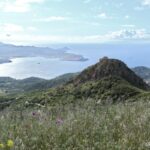 The Tuscan Archipelago National Park, established in 1996, covers approximately 61,000 hectares of land and 56,000 hectares of sea, making it the largest marine park in Europe. It includes the ...
The Tuscan Archipelago National Park, established in 1996, covers approximately 61,000 hectares of land and 56,000 hectares of sea, making it the largest marine park in Europe. It includes the ... - Elba island
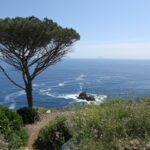 TheIsland of Elba is a heavenly place located more than 10 kilometers from the Tuscan coast. It is appreciated for its coast with its beaches, coves and diving sites, for its ...
TheIsland of Elba is a heavenly place located more than 10 kilometers from the Tuscan coast. It is appreciated for its coast with its beaches, coves and diving sites, for its ... - Giglio Island
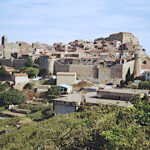 L’Île de Giglio, située au large de la côte toscane dans la mer Tyrrhénienne, à moins de 20 km du promontoire d’Orbetello, est la deuxième plus grande île de l’archipel ...
L’Île de Giglio, située au large de la côte toscane dans la mer Tyrrhénienne, à moins de 20 km du promontoire d’Orbetello, est la deuxième plus grande île de l’archipel ... - Pianosa Island
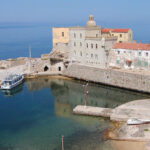 Pianosa, au cœur de l’archipel toscan, est une destination singulière qui attire aujourd’hui les visiteurs en quête de nature préservée et d’histoire insolite. Accessible uniquement dans le cadre d’excursions encadrées, ...
Pianosa, au cœur de l’archipel toscan, est une destination singulière qui attire aujourd’hui les visiteurs en quête de nature préservée et d’histoire insolite. Accessible uniquement dans le cadre d’excursions encadrées, ... - Giannutri island
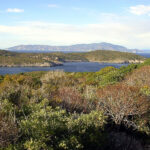 L’île de Giannutri est la plus méridionale de l’archipel toscan, située à une dizaine de kilomètres au sud de l’île du Giglio.De forme allongée (environ 5 km de long), elle ...
L’île de Giannutri est la plus méridionale de l’archipel toscan, située à une dizaine de kilomètres au sud de l’île du Giglio.De forme allongée (environ 5 km de long), elle ... - Montecristo Island
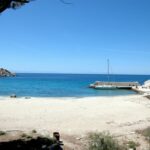 L’île de Montecristo est une petite île italienne située dans la mer Tyrrhénienne, au sud de l’île d’Elbe, faisant partie de l’archipel toscan. D’une superficie de 10,39 km², elle est ...
L’île de Montecristo est une petite île italienne située dans la mer Tyrrhénienne, au sud de l’île d’Elbe, faisant partie de l’archipel toscan. D’une superficie de 10,39 km², elle est ...
FAQ – Île de Capraia
Comment se rendre à Capraia depuis la France ou l’Italie ?
Capraia est accessible en ferry depuis le port de Livourne, en Toscane. Les traversées sont opérées par la compagnie Toremar et durent environ 2h30. Il est recommandé de réserver à l’avance, surtout en haute saison. En été, des traversées en ferry relient l’île d’Elbe à Capraia. Les départs ont lieu chaque vendredi depuis le port de Portoferraio, avec un temps de trajet d’environ 2 heures. Depuis Marciana Marina, situé sur la côte nord de l’île d’Elbe, les traversées durent environ 1h30. Ces liaisons sont opérées par la compagnie locale Aquavision
Comment circuler à Capraia ?
L’accès des véhicules privés est limité, notamment en été, afin de préserver l’environnement naturel de l’île. Il est conseillé de se déplacer à pied ou en utilisant les transports locaux disponibles, ou de louer un deux roues..
Quand est-il préférable de visiter Capraia ?
La meilleure période pour visiter Capraia est de mai à septembre, lorsque le climat est agréable et que les services touristiques sont pleinement opérationnels. Cependant, l’île conserve son charme même en dehors de la haute saison.
Y a-t-il des hébergements sur l’île ?
Oui, Capraia propose divers types d’hébergement, notamment des hôtels, des chambres d’hôtes et des appartements. Il est conseillé de réserver à l’avance, surtout pendant les mois d’été.
Informations et liens
Liens utiles en français 🔗
- Île de Capraia – Île d’Elbe
- Wikipédia – Île de Capraia
- Explorer l’île de Capraia : un paradis méditerranéen


No Comments Yet